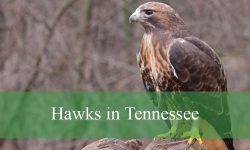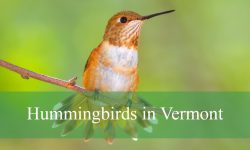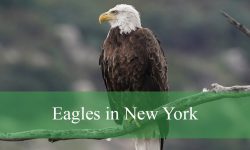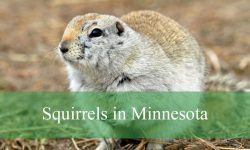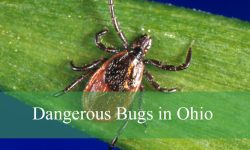In the heart of Alaska’s rugged backcountry, where snow blankets the ground for much of the year and towering spruces cast long winter shadows, one of the region’s most elusive inhabitants quietly thrives. The snowshoe hare—small, swift, and superbly camouflaged—is more than just another creature in the food chain. It is a keystone species, a survivor of extremes, and a silent indicator of the health of Alaska’s boreal wilderness.
Despite its wide distribution, the snowshoe hare remains largely mysterious to those outside the scientific or subsistence communities. Its nocturnal habits, remarkable seasonal adaptations, and ecological importance make it a fascinating subject for closer inspection. This article delves deep into the hidden life of snowshoe hares in Alaska, unraveling the secrets of their survival and the intricate web of connections they sustain in the wild.
A Creature Perfectly Tailored to the Arctic North
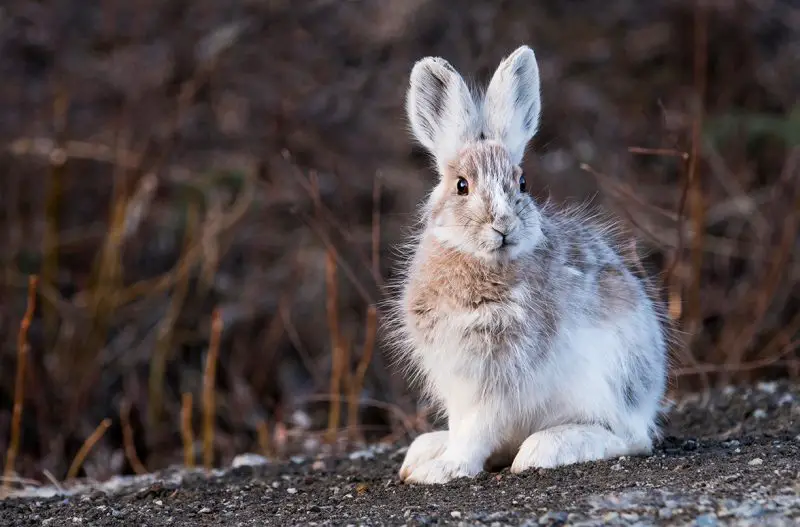
The Physical Traits That Help It Survive
The snowshoe hare (Lepus americanus) is not an ordinary rabbit. Though it shares some physical similarities with its cousin, its uniquely evolved characteristics make it a true Arctic specialist. One of its most remarkable features is its oversized feet, which function like natural snowshoes. These wide, fur-covered feet allow the hare to glide across soft snow without sinking, providing both mobility and escape from predators.
Another incredible adaptation is its changing coat. In summer, snowshoe hares don a brown pelage that blends perfectly with the forest floor. As temperatures drop and snow begins to cover the land, their fur turns white, providing essential camouflage against a wintry backdrop. This transformation, triggered by changes in daylight rather than temperature, demonstrates nature’s finely tuned timing.
Equipped with strong hind legs for powerful jumps and large ears for acute hearing, the snowshoe hare is well-designed for survival in a land that demands constant vigilance. Every part of its body plays a role in helping it evade danger while navigating the complex terrain of the Alaskan wilderness.
The Boreal Forest: A World of Shelter and Risk
Alaska’s boreal forests, also known as taiga, provide the snowshoe hare with a home full of both opportunity and danger. Dominated by spruce, birch, and alder trees, this ecosystem offers shelter, food, and hiding places. However, it also shelters some of the hare’s greatest threats—lynx, foxes, coyotes, and birds of prey that rely on it for sustenance.
The snowshoe hare spends most of its time beneath the protective canopy, using dense underbrush as cover. This vegetation-rich environment allows the hare to remain concealed from aerial and ground-based predators. Yet it must constantly move, for staying in one place too long can make it vulnerable. The dance between hiding and moving is relentless, especially during Alaska’s long winter nights when predators are on the prowl.
Despite these dangers, the boreal forest is indispensable to the hare’s survival. The thick undergrowth not only serves as cover but also provides a year-round food source in the form of twigs, bark, and shrub leaves.
Feeding Habits of a Resourceful Forager
Surviving on What the Forest Offers
Snowshoe hares are primarily herbivorous, feeding on whatever plant matter is available in their environment. During the warmer months, their diet consists of grasses, ferns, clover, and other green vegetation. In these seasons, food is plentiful and relatively easy to find. The abundance allows the hares to replenish their energy reserves, reproduce, and fatten up before winter returns.
However, when snow covers the ground and green matter disappears, the snowshoe hare’s diet shifts dramatically. They begin to nibble on twigs, tree bark, and evergreen needles. Willow, alder, and birch shrubs become vital sources of nourishment during these lean months. Their digestive systems are capable of extracting nutrients from this coarse vegetation, a trait not shared by all herbivores.
Interestingly, snowshoe hares practice a behavior known as coprophagy—re-ingesting their own fecal pellets to extract every possible nutrient. While it may seem unpleasant, this adaptation helps them survive in times when the caloric value of available food is low.
Feeding and Avoiding Being Fed Upon
Finding food is only half the equation; avoiding becoming food is equally important. Snowshoe hares usually forage under the cover of darkness to avoid diurnal predators. Their crepuscular and nocturnal activity helps them remain hidden, although it also aligns their routines with some of their most dangerous predators, such as the lynx.
They rarely venture far from dense cover, ensuring they have an escape route if danger arises. Even their feeding paths are strategic—often looping or crossing to confuse predators following their scent. Every bite they take in winter is a calculated risk, as leaving tracks in fresh snow can lead danger right to their location.
A Life of Cycles: Boom and Bust in the Snow
The Legendary Population Cycle
Perhaps the most fascinating aspect of the snowshoe hare’s life is its dramatic population cycle. Approximately every 8 to 11 years, their numbers swell to incredible levels before crashing just as dramatically. This cycle has puzzled ecologists for over a century and remains one of the most iconic examples of natural population fluctuation in mammals.
When hare populations rise, so too do the numbers of their predators, especially the Canada lynx, whose fate is tightly intertwined with that of the hare. With food readily available, lynx reproduce more successfully, and their growing numbers eventually outpace the available hare population. As predation increases, hare numbers plummet, and the cycle begins anew.
This predator-prey dynamic is a vital force in shaping Alaska’s ecological balance. When hares are abundant, they impact vegetation through heavy browsing, which in turn affects other herbivores and plant regeneration. Their decline allows the ecosystem to recover until the next peak.
The Influence of Climate and Environment
While the natural cycle has been observed for centuries, climate change is introducing new variables that may disrupt these rhythms. Warmer winters and unpredictable snowfall patterns can throw off the hare’s seasonal camouflage, making them more vulnerable to predators. A hare still cloaked in white fur standing on snowless ground becomes an easy target.
Changes in vegetation patterns, driven by temperature shifts and altered precipitation, can also affect food availability. If shrubs and saplings decline or change in composition, snowshoe hares may find it harder to meet their dietary needs, especially in winter.
Scientists continue to monitor how these factors are influencing the cycle and whether the delicate predator-prey balance is at risk of permanent disruption in the coming decades.
Reproduction and Life in the Shadows
Breeding in the Northern Wild
Snowshoe hares breed prolifically during the summer months, ensuring their population can recover from high levels of predation. Mating begins as early as March and continues through August. Females can produce up to four litters in a single season, each consisting of up to six leverets—young hares.
Unlike rabbits, snowshoe hares give birth to fully furred, open-eyed young capable of independent movement shortly after birth. This precocial state is essential in a world full of predators. Within days, the leverets begin to forage, though they remain hidden in dense vegetation for safety.
Mothers spend minimal time with their offspring to reduce the chance of drawing predator attention. Instead, they nurse briefly, often at night, before retreating. This hands-off parenting style may seem harsh, but it’s a crucial survival strategy in Alaska’s predator-rich environment.
Growing Up Fast in a Harsh World
Young snowshoe hares grow quickly. Within a few weeks, they resemble adults and begin establishing their own territories. By autumn, many of them are fully independent, already equipped with the instincts and physical traits needed to face their first winter.
Survival rates for leverets are low, especially during the early stages of population booms when predators are numerous. However, the sheer number of offspring produced each year ensures that at least some survive to adulthood. The rapid maturation process and high reproductive rate are part of the hare’s resilience in such a challenging habitat.
A Keystone in Alaska’s Food Web
Feeding More Than Themselves
Snowshoe hares are not just survivors—they are providers. Their abundance directly supports a wide range of Alaskan predators. Canada lynx, in particular, are heavily dependent on hares and will experience population declines during hare busts. Other predators such as great horned owls, red foxes, coyotes, and even wolverines include hares in their diets.
Because they form the foundation of so many food chains, snowshoe hares are considered a keystone species. Their well-being reflects the broader health of the ecosystem, and their fluctuations ripple across the food web. A decline in their numbers doesn’t just impact their predators—it affects plant life, nutrient cycles, and even competition among other herbivores.
The Role in Vegetation and Forest Regeneration
As heavy browsers, snowshoe hares also influence the growth of plants and forest composition. In peak years, their feeding can strip young shrubs and trees of bark and twigs, slowing plant regeneration. This intense browsing pressure can reduce the success of certain tree species, potentially altering forest succession patterns over time.
In this way, snowshoe hares act as both consumers and landscape shapers. Their presence can determine which plants thrive, which ones diminish, and how forest gaps are filled. Understanding their ecological role provides insight into the complex interactions within Alaska’s taiga.
Human Connections and Cultural Significance
Snowshoe Hares in Indigenous Life
Long before scientific studies brought them into the limelight, snowshoe hares were known and respected by Alaska Native communities. These animals provided meat, fur, and were often central to traditional stories and ecological knowledge. Their predictable cycles informed hunting practices and seasonal movement patterns.
The soft, insulating fur of the snowshoe hare was used for clothing and blankets, especially in regions where other fur sources were scarce. Because they were relatively easy to trap in winter, they became a staple in some subsistence diets. Their importance extended beyond material use into spiritual and cultural significance.
Today, they remain a symbol of adaptability and resilience, and many Indigenous knowledge systems still incorporate the hare’s cycles into broader ecological understanding.
Scientific Research and Conservation
Modern science continues to uncover the many mysteries of snowshoe hares, from their genetic adaptations to their predator-prey dynamics. Conservationists monitor their population trends as indicators of ecosystem health and as a gauge of climate change’s impacts in northern latitudes.
While the species is not currently endangered, ongoing research aims to understand how shifts in climate, land use, and predator populations may affect their long-term survival. Efforts to maintain healthy forest habitats and reduce human disturbance in key areas are vital to preserving the natural rhythms that have sustained snowshoe hares for millennia.
Conclusion: The Enigmatic Pulse of Alaska’s Wilderness
To know the snowshoe hare is to glimpse the deeper rhythms of Alaska’s untamed landscapes. This quiet, elusive animal embodies both fragility and endurance—shaped by snow, shadow, and the age-old game of survival. Its world may be hidden beneath thickets and snowfall, but its presence reverberates through the entire ecosystem.
By observing the snowshoe hare, we come to understand more than just one species. We see the complexity of predator-prey relationships, the subtle changes in climate, and the ancient cycles that continue to turn in the far north. In the end, the snowshoe hare is more than a creature of habit—it is a guardian of ecological balance, a quiet sentinel of the boreal wild.
FAQs about Snowshoe Hares in Alaska’s Wilderness
What makes snowshoe hares different from regular rabbits?
Snowshoe hares differ from typical rabbits in several key ways. They have large, fur-covered feet that act like snowshoes, allowing them to move easily across snowy terrain. Unlike most rabbits, they also change color with the seasons—from brown in summer to white in winter—for camouflage. Their powerful hind legs and heightened senses make them particularly well-suited to surviving in the harsh environments of Alaska.
Why do snowshoe hares change color?
Snowshoe hares change color to better blend into their surroundings. During the warmer months, their brown fur helps them hide in the forest underbrush. As daylight hours shorten and snow begins to fall, they molt into a white coat to blend in with the snowy landscape. This seasonal camouflage helps protect them from predators like lynx and owls.
How often do snowshoe hare populations rise and fall?
Snowshoe hare populations follow a well-known cycle that peaks and crashes roughly every 8 to 11 years. These fluctuations are driven largely by predator-prey dynamics—particularly with the Canada lynx—and by changes in food availability and disease. During peak years, hare numbers can be extremely high, followed by dramatic declines that affect the entire food web.
What predators rely on snowshoe hares in Alaska?
Snowshoe hares are a key prey species for many predators in Alaska. Canada lynx are the most closely tied to hare populations, but red foxes, coyotes, great horned owls, goshawks, and even wolverines also rely on them for food. Because so many animals depend on them, their population changes can ripple through the entire ecosystem.
Are snowshoe hares endangered or threatened?
No, snowshoe hares are not currently considered endangered or threatened. They remain widespread throughout Alaska and other parts of North America. However, ongoing environmental changes—such as climate change and habitat alteration—could impact their population dynamics and distribution in the future.
What do snowshoe hares eat during the winter?
In winter, when green plants are scarce, snowshoe hares feed on woody vegetation such as twigs, bark, and buds from shrubs and young trees—especially willow, alder, and birch. Their digestive systems are adapted to extract nutrients from this coarse material. They also re-ingest certain types of fecal pellets to get maximum nutrition.
How do snowshoe hares avoid predators?
Snowshoe hares use camouflage, stealth, and speed to avoid predators. Their seasonal coat color helps them blend into their environment. They typically forage at night and stay close to dense cover, making it harder for predators to spot them. When threatened, they can leap great distances and change direction rapidly to evade capture.
What role do snowshoe hares play in Alaska’s ecosystem?
Snowshoe hares are considered a keystone species in Alaska’s boreal forest. They provide a critical food source for many predators and influence vegetation patterns through their browsing habits. Their population cycles also affect the reproductive success and numbers of their predators, particularly the Canada lynx.
Do Indigenous communities in Alaska still rely on snowshoe hares?
Yes, many Alaska Native communities still hunt snowshoe hares for food and use their fur for clothing and traditional crafts. These hares have long been part of Indigenous subsistence practices and remain culturally significant today. Traditional ecological knowledge continues to inform how people understand and coexist with the species.
How is climate change affecting snowshoe hares?
Climate change is beginning to disrupt the timing of snowshoe hares’ coat color changes, leading to a mismatch between their white winter fur and increasingly snow-free ground. This camouflage mismatch makes them more vulnerable to predators. Additionally, changes in plant growth and snow conditions may impact their food sources and shelter, posing long-term survival challenges.

